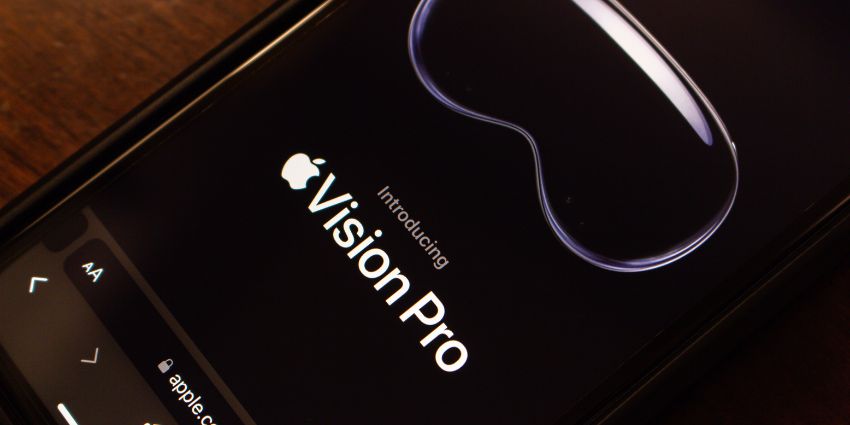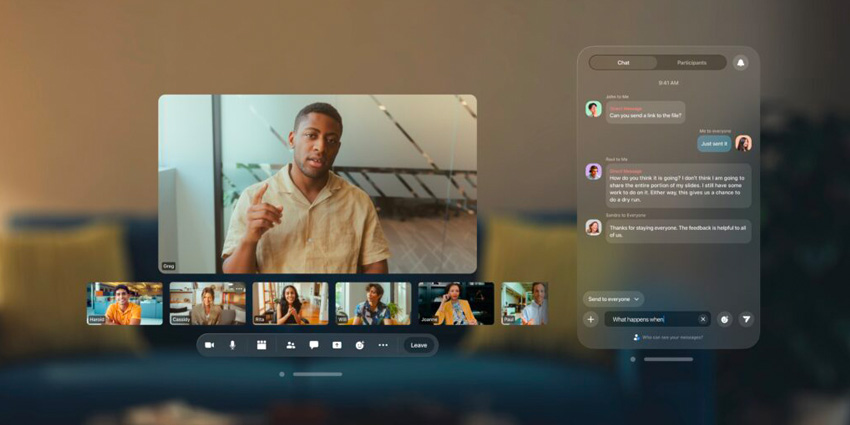Apple Optic ID represents just one of the latest features of the upcoming Apple Vision Pro headset. Ever since it announced its spatial computing headset in June 2023, Apple has begun gradually releasing more insights. Like with most Apple products, full details on the headset are scarce.
So far, we know the Apple Vision Pro will offer everything from intuitive mixed reality experiences to sensational spatial audio. Now, we also know the innovator is rolling out a new iris authentication system. The “Apple Optic ID,” solution will bring new levels of security to the Vision Pro.
But what is Apple Optic ID, how does it work, and what does it mean for the future of XR security? Here’s everything we know so far.
What is Apple Optic ID? The Basics
Apple Optic ID is the proprietary security solution for Apple’s latest mixed-reality headset, the Vision Pro. It was created with Apple’s “VisionOS” spatial computing operating system, using the latest biometric authentication technology.
According to the patent for Optic ID, the solution uses a combination of LED illuminators and infrared cameras within the Apple Vision Pro to map and analyze a user’s iris. Every person’s iris is distinctly different,, allowing for accurate authentication. Apple says the technology can even detect the unique attributes of identical twins, highlighting its exceptional accuracy.
This isn’t the first time Apple has introduced biometric technology into its devices. Already, the tech giant uses fingerprint sensors (Touch ID) on its smartphones and tablets. It also leverages Face ID technologies, which authenticate a user’s face using depth sensors and infrared dots.
However, Apple wanted to do something unique for its new mixed-reality headset. Rather than embedding touch ID into a button on the otherwise hands-free spatial computing device, they devised an all-new biometric model.
Notably, iris scanning tech isn’t entirely new in the authentication landscape either. These technologies are used in airports around the world to identify travelers. However, attempts to integrate iris scanners into devices and consumer technology haven’t always been successful. For instance, the iris scanner in the Samsung Galaxy S8 phone was hacked by researchers and fooled into identifying people based on photos rather than actual human eyes.
How Does the Technology Work?
Apple Optic ID uses iris scanning to facilitate the entire authentication process for Apple Vision Pro headset users. Similar to how you can use your fingerprint or face on your iPhone to log into your device, you can use the Optic ID technology to secure your XR headset.
Building in innovative eye tracking technology, Optic ID uses LED light exposure to take a 3D scan of your eye. The Vision Pro headset projects the light onto your eye and sends information back to an on-board computer system. This system then compares the scan against the scans you uploaded when configuring your Vision Pro device.
Notably, the iris scans you upload are stored securely in the Vision Pro “Secure Enclave,” which means the data never leaves your device. This means the experience is similar to the Face ID technology already on iPhone models.
All of your information is encrypted on your Vision Pro. Additionally, Apple announced at the WDCC event for 2023 that it’s also working on other security features to protect its users.
For instance, the operating system’s design ensures everything you look at through your headset remains private. Data will also be isolated in a separate background process, so websites and apps can’t see what you’re looking at. Only when you interact with content through your headset, using your voice or gestures, will data be communicated at a system level.
How Secure is Optic ID for Apple Vision Pro?
The Apple Optic ID feature demonstrates Apple’s commitment to making the Vision Pro more than a consumer-grade device. While you might not be too concerned about protecting your data on a personal XR headset, privacy is essential to XR in the enterprise.
Optic ID will ensure guests and other users can’t access the same information and tools as crucial employees within a business environment. It could even allow organizations to set up different access controls for specific staff members, allowing for greater data security.
But exactly how secure is Apple Optic ID? So far, the information available from Apple and its patent filings is limited. However, we know that Optic ID technology considers several parts of the iris, as well as the eyelids and eyebrows of each user, for a holistic approach to authentication.
Since each person’s iris is unique, the technology gives Apple an excellent way to deliver higher enterprise-grade security. Optic ID may perform better than Face ID, which Apple trained with over a billion images via its deep learning algorithm.
After all, while face ID tools may struggle to tell the difference between similar-looking people, Apple Optic ID can effectively distinguish between identical twins. Apple has configured its technology to rely on “3D depth data” to address other potential security issues.
This means you won’t be able to simply fool the system with a photo of an eye. As a bonus, since Apple secures all of the data held by Optic ID on your device, you can rest assured no one else can get their hands on your scan.
What Can You Do with The New Security Feature?
At present, Apple Optic ID is unique to the Vision Pro headset. So, you’ll need to wait until Apple eventually releases its new device to test it for yourself. Experts and industry analysts believe the Vision Pro should begin rolling out in early 2024. However, Apple has faced some delays, some of which could push production times back even further.
Primarily, Apple Optic ID is there to stop unauthorized people from accessing your expensive XR technology and the data stored on your device. It should help provide companies with a more secure XR experience, particularly if multiple team members share a headset.
However, the functionality of Optic ID doesn’t stop with authentication. Similar to the iPhone’s Touch ID and Face ID features, this biometric tech can accomplish other things. For instance, you can use it within VisionOS to:
- Authorize purchases on the Apple App Store
- Authorize payments with Apple Pay
- Autofill saved passwords on apps and websites
- Unlock hidden content on the Apple Vision Pro
This technology will likely also work with third-party apps on the Vision Pro when they launch, similar to Apple’s existing security measures. However, it’s uncertain whether users will need to implement additional authentication methods, like setting up a numeric passcode.
It’s also worth noting that the same technology powering Apple Optic ID will also help to enable highly accurate and precise eye tracking in the headset. This should ensure the “spatial computing” experiences on the Apple Vision Pro feel organic and natural.
Unlike other XR headsets, Apple isn’t introducing any controllers with its device, so it will rely entirely on eye and hand tracking capabilities to allow users to interact with virtual content.
Will Optic ID Appear on Other Devices?
If, like many business leaders, you’re excited about the security potential of Optic ID, you might be wondering whether it will be rolling out to other devices. After all, the Apple Vision Pro is an expensive piece of technology and one of the most advanced in the XR space.
Apple hasn’t released any information suggesting it will bring Optic ID to other tools for now. However, there’s every chance this technology and other aspects of the VisionOS operating system will trickle into new Apple devices.
If the tech giant continues to invest in the extended reality market, creating new smart glasses and even cheaper versions of the Vision Pro, these tools may feature Optic ID.
Additionally, Optic ID may appear on non-XR tools, like the new Apple iPhones, in the years to come. Apple has already demonstrated an interest in bringing spatial technology into its product portfolio.
The Future of XR Device Security
Apple Optic ID is more than just an exciting feature in a wide range of capabilities promised by the Apple Vision Pro. It’s an insight into the steps leading innovators are taking to make extended reality more secure and sustainable within the enterprise landscape.
High-level security features, access control settings, and compliance solutions will be essential for any business investing in the “enterprise-level” metaverse and XR tech going forward. Apple’s innovations in biometric security could inspire other developers to follow suit.
There’s a good chance we’ll see more business leaders implementing intelligent security features into XR and metaverse solutions as companies continue to invest in immersive tech.







